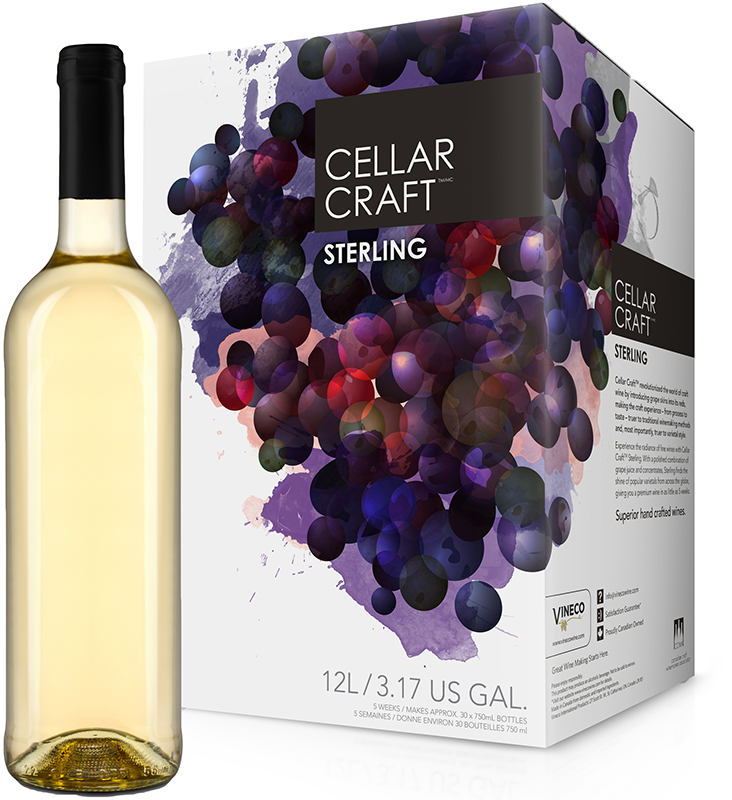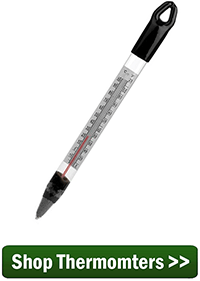 Hi guys!
Hi guys!
Just a quick follow up on how things are going with my Cellar Craft Sterling California Chardonnay! Last time, I’d taken you through the degassing stage, and other than a (hopefully) minor oversight that resulted in me stopping secondary fermentation 2 specific gravity points early, I think everything is going well!
The next stage, then, is the clearing stage. The specific gravity is still holding at 0.980 on the hydrometer, though the wine’s fermentation temperature is a lot lower now that I decided to unplug the heating pad after the fermentation was complete. My reasoning was since I don’t need to keep the yeasts happy anymore with good fermentation temperatures, then I didn’t need to keep the heating pad plugged in and running. Hopefully that was the right decision.
The only issue I ran into during the clearing stage was that I accidentally spilled most of the Kieselsol pouch on the counter due to clumsiness. Thankfully, since I never got to that stage with my last batch of Sterling California Chardonnay, I still had the Kieselsol package from that, so I just went ahead and opened that one and dumped those contents into my wine. Problem solved! Ah, the benefits of having extra ingredients laying around! I’ll have to keep that in mind for my next order and just stock up on a bunch of ingredients that I use on a semi-regular basis.
Now, I have the wine sitting around waiting to clear and basically waiting to be bottled. I don’t think I’ll be filtering the wine this time, as I forgot to purchase new filter pads for my wine filter system and I’m not convinced the system even works very well to begin with, but me making unfiltered wine is pretty much par for the course at this point and my husband is still pleased with the wines, so why not continue that trend!
 The only other question I had so far when making this Chardonnay was again related to the wine’s fermentation temperature. I noticed that the heating pad kept my wine consistently in the high 70°F range. This is according to my thermometer strip I have stuck to the side of the fermenter. I am only slightly concerned about this, as according to the instructions, the upper fermentation temperature limit recommended was 75oF. Now, the heat pad that I bought seems to have been keeping the temperature around 78oF which makes me a little nervous. How big a deal is 3oF? Does that really matter?
The only other question I had so far when making this Chardonnay was again related to the wine’s fermentation temperature. I noticed that the heating pad kept my wine consistently in the high 70°F range. This is according to my thermometer strip I have stuck to the side of the fermenter. I am only slightly concerned about this, as according to the instructions, the upper fermentation temperature limit recommended was 75oF. Now, the heat pad that I bought seems to have been keeping the temperature around 78oF which makes me a little nervous. How big a deal is 3oF? Does that really matter?
Seeing as how I didn’t do anything about the temperature and it still ended finishing out fermentation around the appropriate specific gravity, it is probably OK, but I would not be surprised if it had slowed it down just a little at the end. If you recall, it did take an extra couple days for the wine to reach 0.998, though technically I was supposed to take it to 0.996 and likely would have taken several more days to do that. I’m wondering if that extra 3 degrees of fermentation temperature was too much for some of the wine yeast and a few more of them died off than would have if the temperature was just a little cooler.
Why in the world, then, would a heating pad designed for winemaking be programmed to heat up to that high of a fermentation temperature? Maybe next time I’ll have to just remember to plug and unplug a bunch of times to try and keep the temperature a little lower.
———————————–
 My name is Leigh Erwin, and I am a brand-spankin’ new home winemaker! E. C. Kraus has asked me to share with you my journey from a first-time dabbler to an accomplished home winemaker. From time to time I’ll be checking in with this blog and reporting my experience with you: the good, bad – and the ugly.
My name is Leigh Erwin, and I am a brand-spankin’ new home winemaker! E. C. Kraus has asked me to share with you my journey from a first-time dabbler to an accomplished home winemaker. From time to time I’ll be checking in with this blog and reporting my experience with you: the good, bad – and the ugly.

My home is on a slab, so no basement. I have no issues with fermentation temperature in the spring, summer and fall, but I do in the winter. I use an electric heater to blow warm air toward my fermenter, and it keeps the temperature in the mid 70s around it. I have not had any winter fermentation issues since I started doing this.
In place of trying to manually Plug/Un-Plug the heating pad, you might want to consider placing a bath towel between the heating pad and the Primary Fermenter. This would allow some of the heat to dissipate prior to reaching the fermenter and therefore making it less efficient. This should lower the effective temperature. You might have to play around with different thicknesses of an insulator (towel) to find the “happy spot”. Cheers!
You can also buy an inexpensive 24 hour timer that can turn the pad on and off several times a day. I use them regularly.